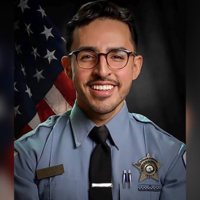 Lin Ming-Huang/Facebook(NEW YORK) — When TransAsia Airways flight seemed to turn belly up in midair, clipping a bridge as it smashed into the Taipei River Tuesday, it seemed unsurvivable. Yet, amidst the wreckage, survivors flapped to the surface.
Lin Ming-Huang/Facebook(NEW YORK) — When TransAsia Airways flight seemed to turn belly up in midair, clipping a bridge as it smashed into the Taipei River Tuesday, it seemed unsurvivable. Yet, amidst the wreckage, survivors flapped to the surface.
Similarly, commuters escaped with their lives Tuesday after being inside the lead car of a Metro-North commuter train that was engulfed in flames when it slammed into a vehicle on the track. Six people died in the crash on Tuesday in Valhalla, New York, including the driver of the SUV on the track, but others escaped the inferno in that train car.
It proves that surviving catastrophe is possible. In fact, it’s a skill that can even be taught.
ABC’s Good Morning America correspondent Matt Gutman recently underwent grueling crash survival training at the U.S. Coast Guard’s Aviation Technical Training Center in Elizabeth City, North Carolina, to learn just that.
He went into a machine known as the Dunker, an aircraft simulator which simulates a plane crashing, sinking and flipping over in the water.
Experts say passengers should choose an aisle seat that is within six rows of the emergency exit on the aircraft. Statistics suggest this could help increase the chances of making it out of the aircraft safely in the event of a water landing.
If the plane sinks, the Coast Guard said passengers should find a reference point, such as their chairs, and remove obstacles such as the armrest. Then, they should unbuckle their seatbelts and feel their way to a door or window and get out.
When the jets were turned on inside the Dunker to simulate a storm, Gutman became disoriented.
Submerged and holding his breath, Gutman slapped and pushed the window for about 40 seconds before it finally popped open and he was able to get out and swim to safety. Basic safety steps can also increase a train rider’s chances of surviving a crash.
Passengers should avoid sitting in the first or last car, since they’re more likely to be hit, said Robert Paaswell, a transportation expert.
“If you’re worried about a head on collision stay out of the first car,” Paaswell said.
Passengers on a train should also take a seat where their backs are facing the direction of travel. If the train crashes, those passengers will be thrust backwards instead of through the train car, he said.
He also advised that riders avoid seats that have luggage overhead, since fallen luggage can cause injuries or block exit paths.
Follow @ABCNewsRadio
Copyright © 2015, ABC Radio. All rights reserved.















